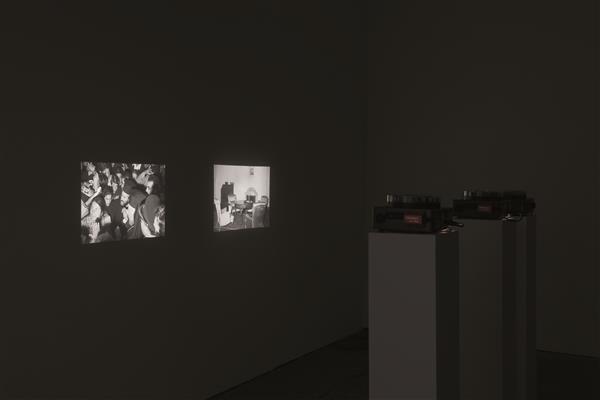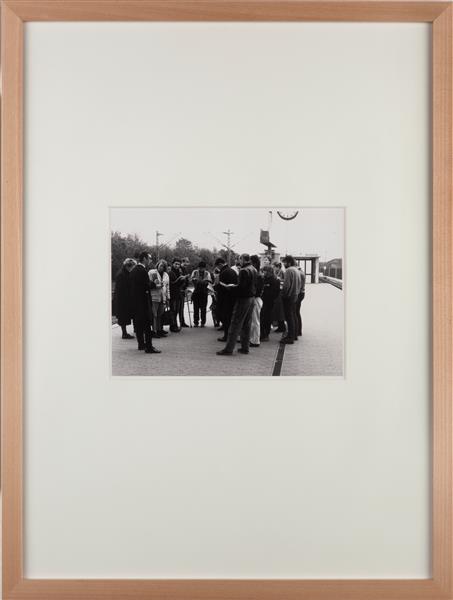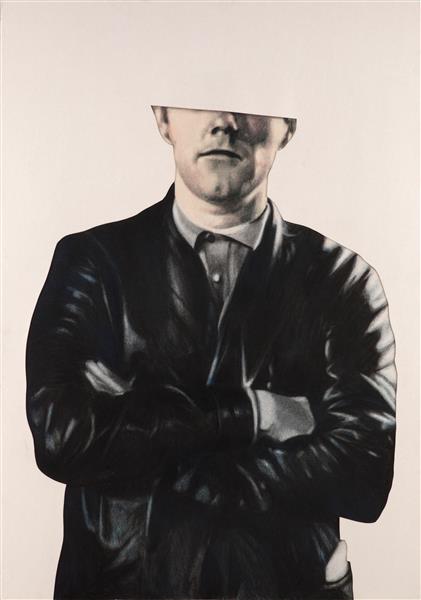I Land (1960–1977)
Christodoulos Panayiotou
160 black-and-white slides, 2 synchronized slide projectors; source of images: Press and Information Office of the Republic of Cyprus, Nicosia
slide Projection, dimensions variable
2010
Acquisition 2011
Inv. No. 0219
I Land (1960–1977) is part of a trilogy concerned with pictures from different sources in Cyprus. For Never Land (2008) Christodoulos Panayiotou drew on the archives of the newspaper Phileleftheros, for Wonder Land (2008) on the municipal archives of Limassol, where the artist, who today shares his time between Berlin and Paris, was born in 1978. For I Land (1960–1977) the artist was able to use the picture library of the Press and Information Office in Nicosia, which, as an official agency, has documented the government’s activities since the foundation of the Republic of Cyprus. 160 slides mirror the rein of Archbishop Makarios III, the first president of Cyprus, from 1966 to 1977 in the official form of classical press photographs. Presented alongside, we find a series of pictures which were also archived, without any comments. The synchrony of the images reveals the incompatibility of individual experience and official history. The accidental entries of the photographers’ private desires yield an unusual picture of the aesthetics of power and the cult around the persona of Makarios III.
The trained dancer Christodoulos Panayiotou talks with Hans Ulrich Obrist about his attitude toward archives (excerpt from an interview for Kaleidoscope1):
HUO: In many works […] you revisit the context of Cyprus. You have been traveling a lot, and I was wondering about the connection between exile and Limassol, your hometown, as a resource for your work.
CP: I never felt that I was in exile. We are blessed and cursed to live in this specific historical moment when travelling is extremely easy and practically becomes a purpose in itself. The radical aspect of the possibility to be both here and there is a fundamental condition in the way the Western world is evolving. Inevitably, this is the condition with which I make sense of my experience in Cyprus.
HUO: Where does your fascination for archives come from?
CP: What I find most interesting in archival pictures, apart from the aesthetic value that time adds to them, is actually the value they gain via the very process of archiving. This attaches a paradoxical dynamic to the images: they reveal the past while they project the future. Beyond this, I do not think that I have developed any systematic way in which I approach archives. For instance, in the case of Wonder Land, the archive is used as visual proof of an observation that I had made before resorting to iconography, that is, the Disneyfication of the Limassol carnival and the way this contrasts with the official narrative. The municipal archive functions, in this case, as an illustration of my view on this social event. In Never Land, I dealt with the archive of the newspaper Phileleftheros, which was totally destroyed in a fire in the late ’80s and was radically modified in 2000 due to the introduction of digital photography. The history of the archive itself, comprising a very concise anthology of the ’90s, defined the outcome of the work as well as the final form of the presentation. Finally, in the first part of the work I am currently developing, I Land (1960–1977), the official records of the Press and Information Office of Cyprus are approached from a more systematic perspective. My research is taking a long time, and the themes are isolated and classified around the articulation of the official history and the accidental records of ego-histoire.
Hans Ulrich Obrist, 2011 (translation: Wolfgang Astelbauer)
1) Hans Ulrich Obrist, “Futura: Christodoulos Panayiotou,” in: Kaleidoscope, Issue 7, summer 2010, 144–149.
Continue readingExhibitions
Now, At The Latest. videos and other attractions from the evn collection, Kunsthalle Krems, Krems, 2015
Publications
Now, At the Latest, Maria Enzersdorf 2015, p. 3
Defining Contemporary Art. 25 years in 200 pivotal artworks, London 2011, p. 436
evn collection. 2006–2011, Cologne 2011, p. 284–289


